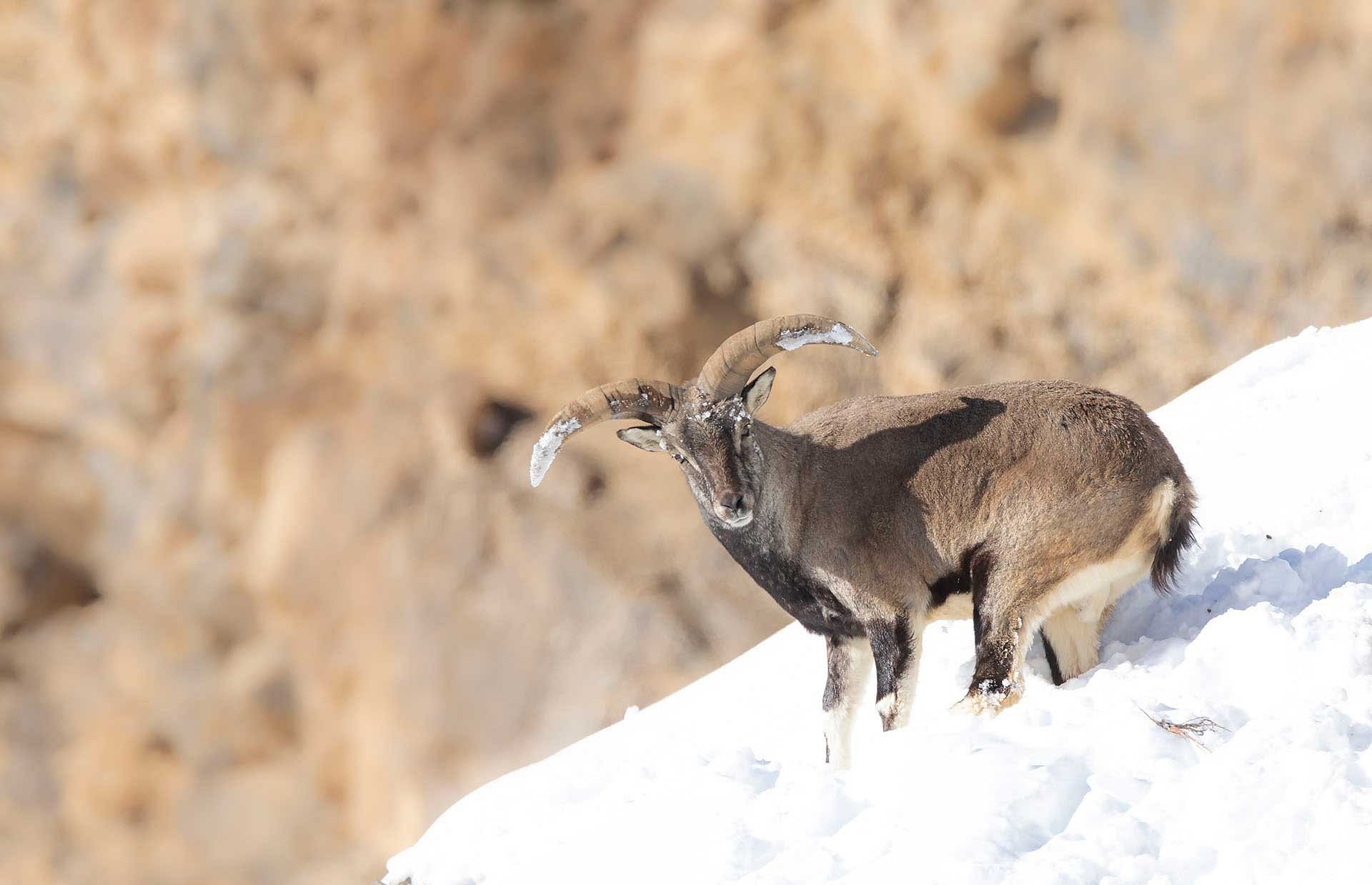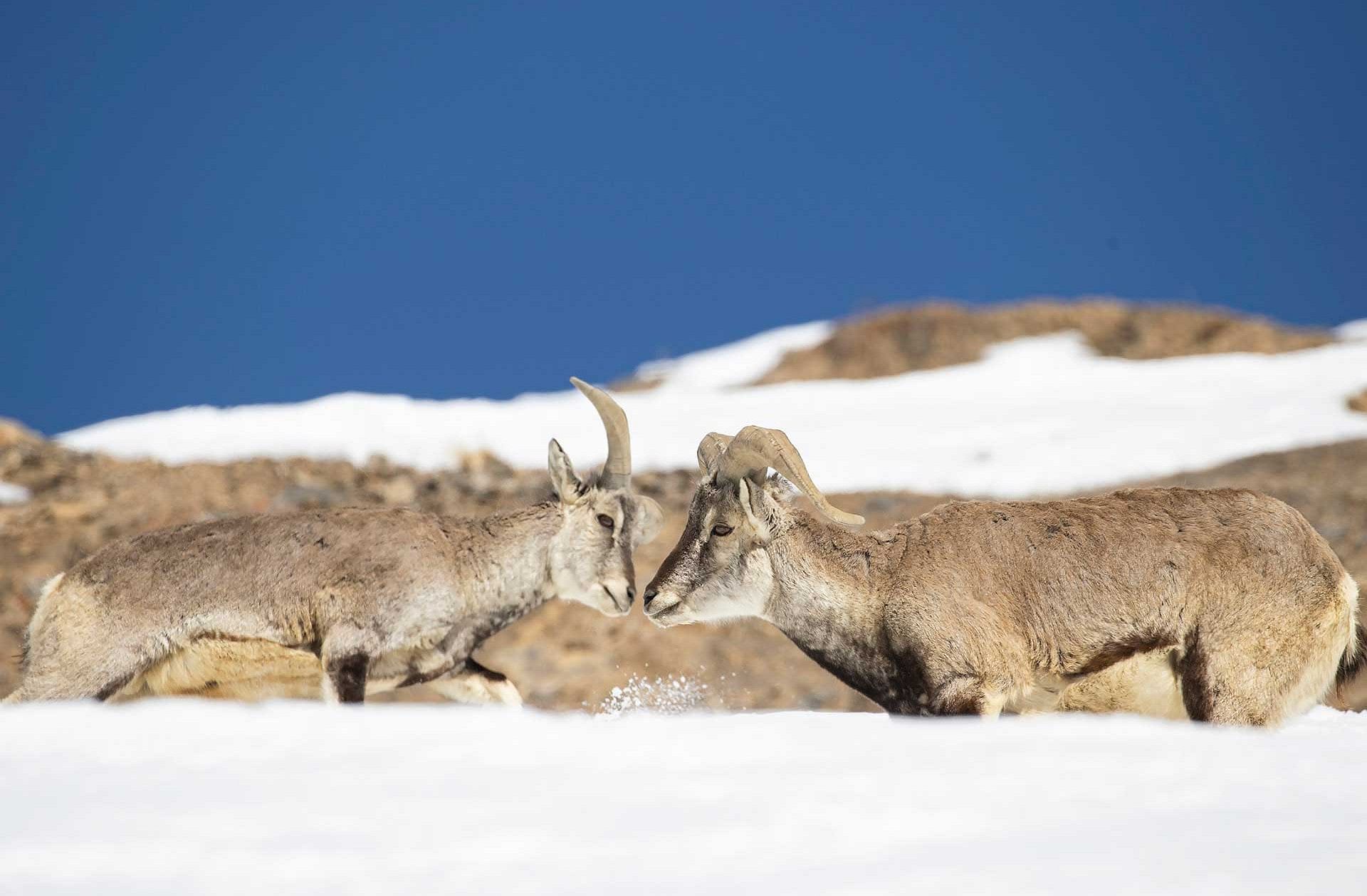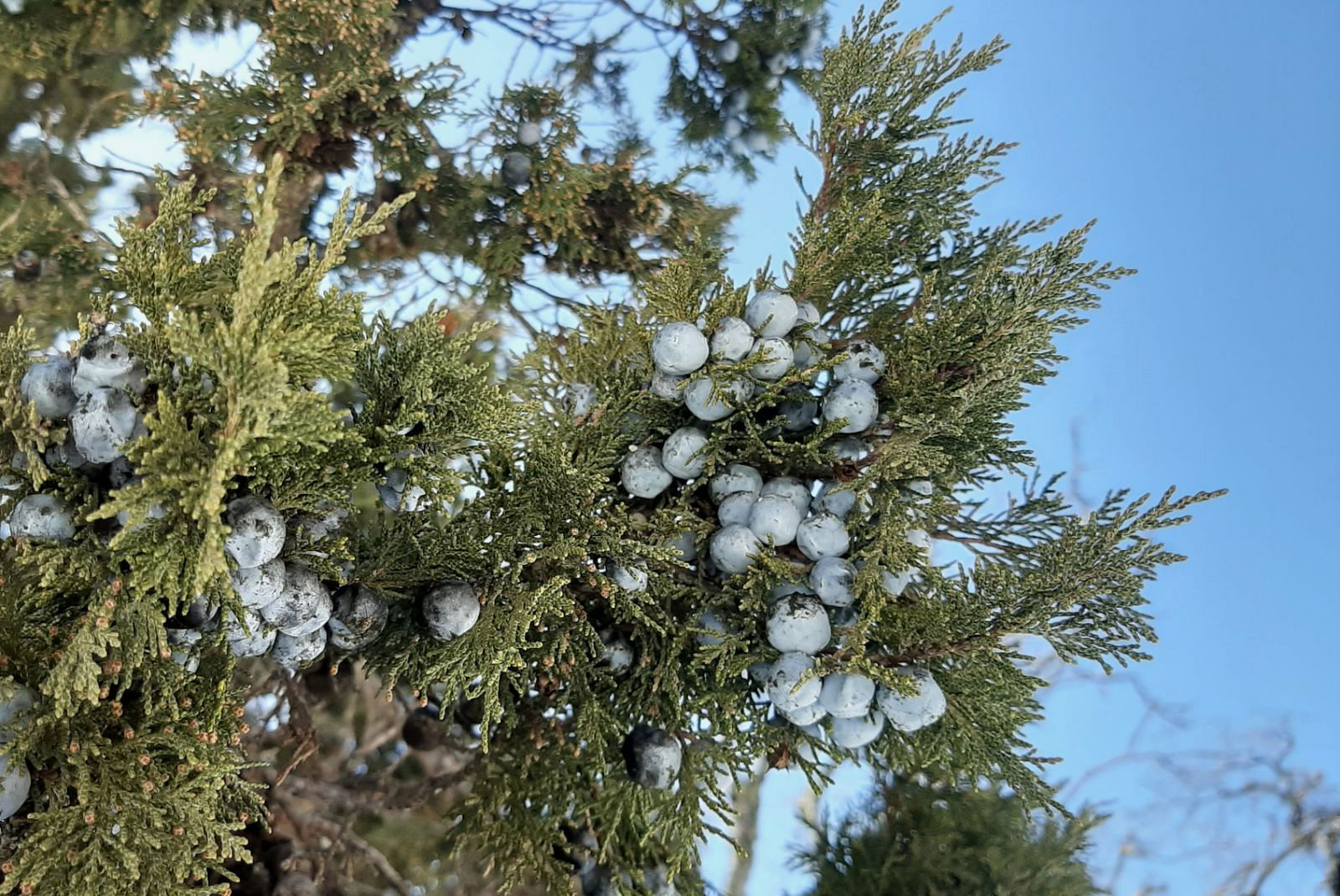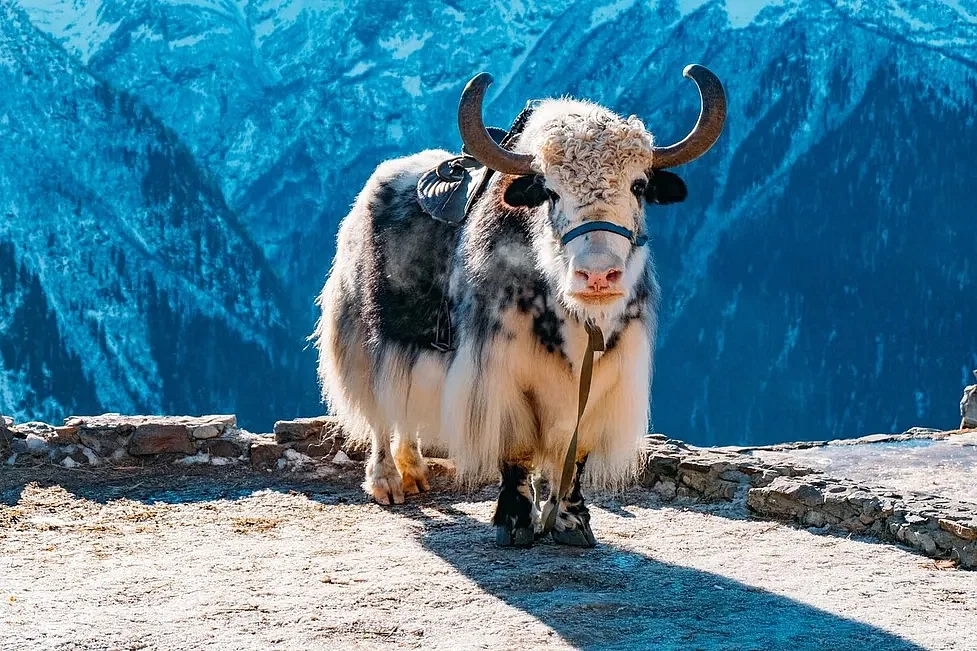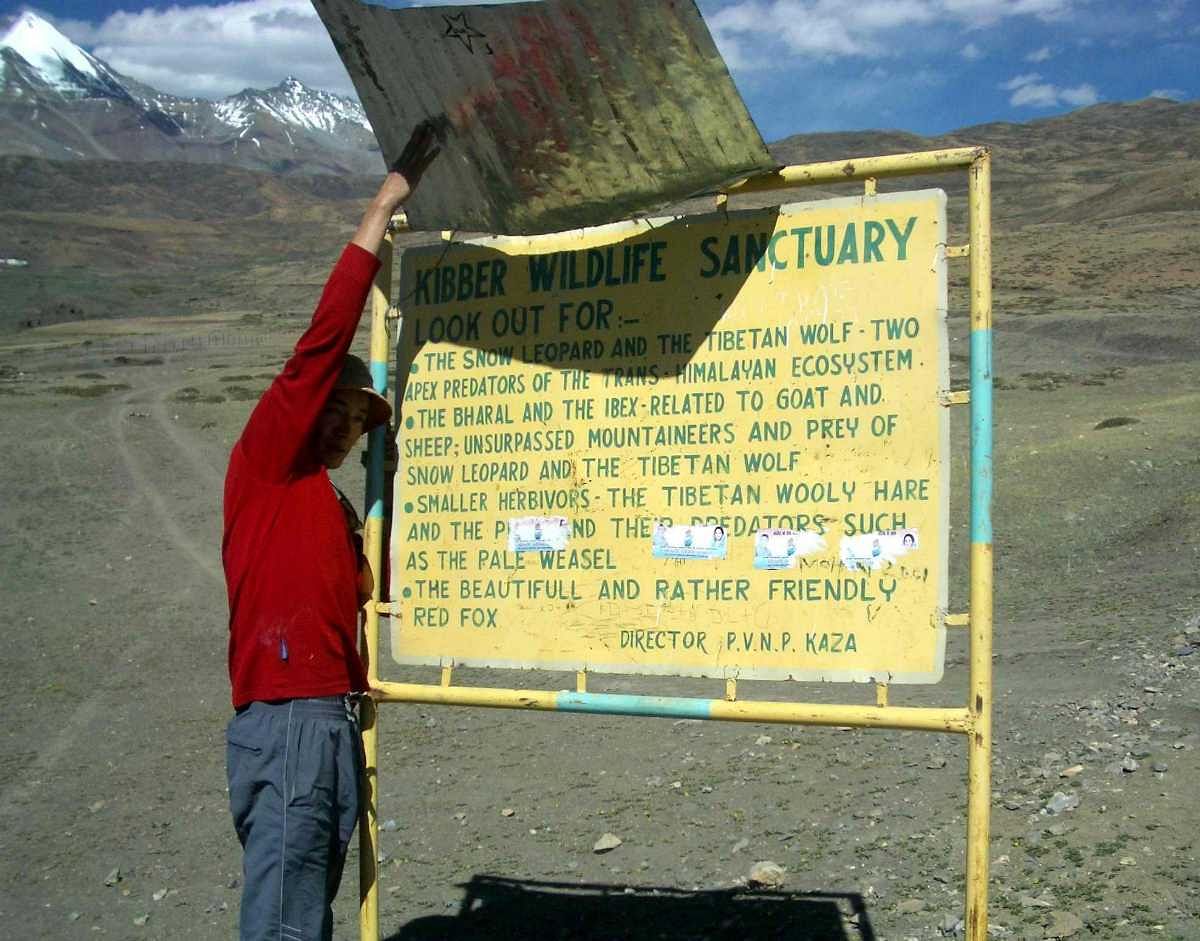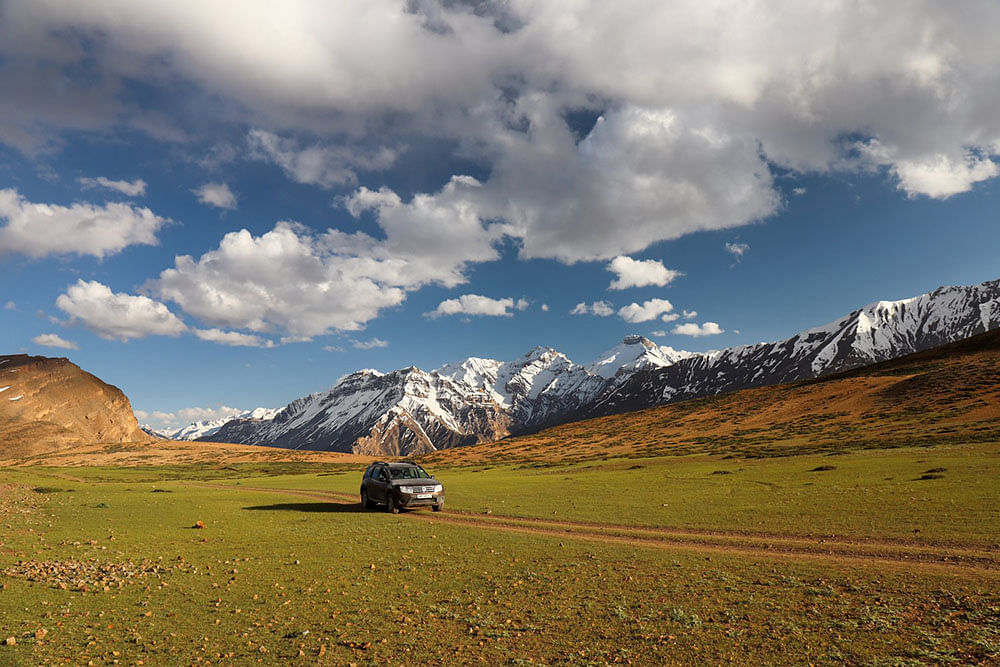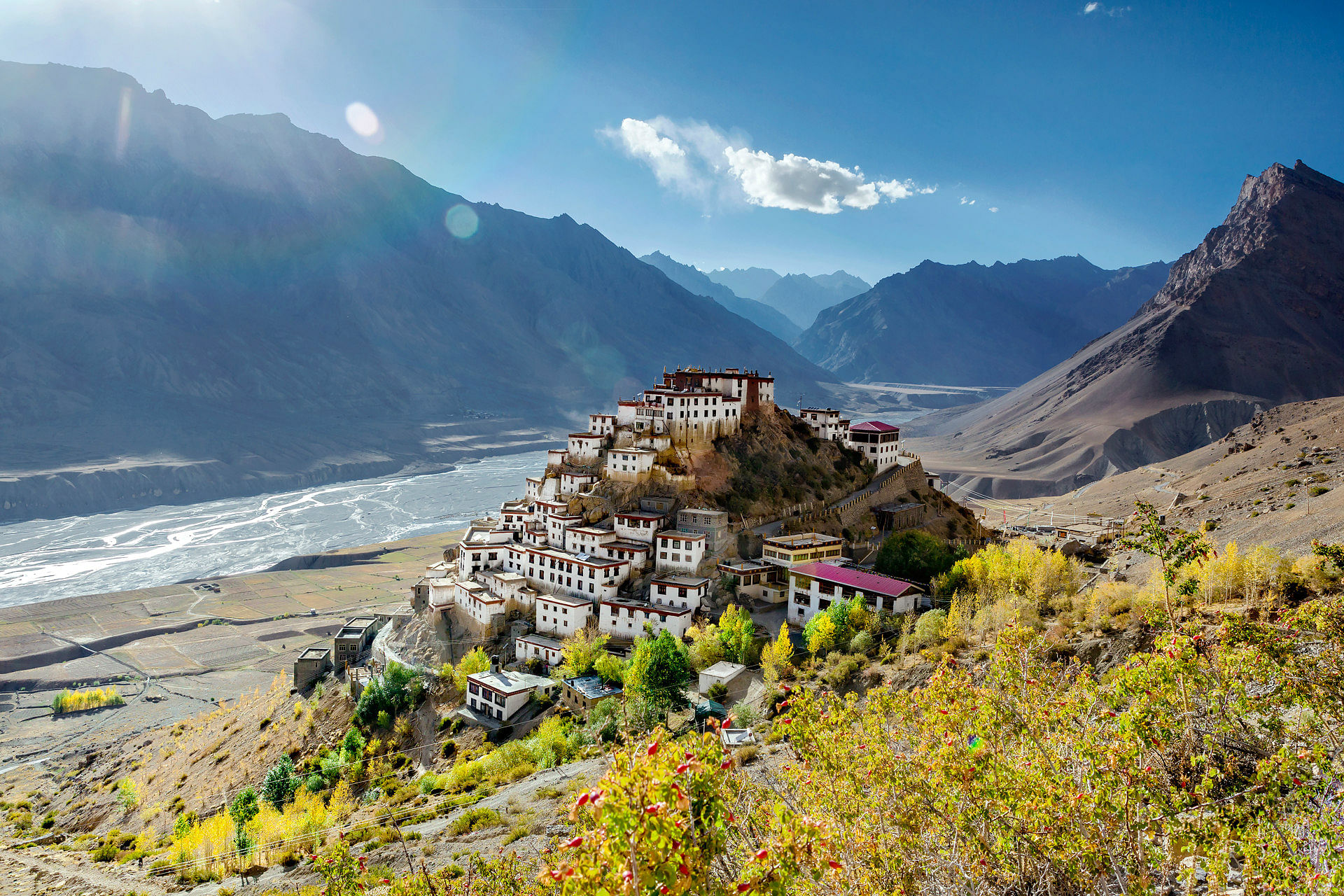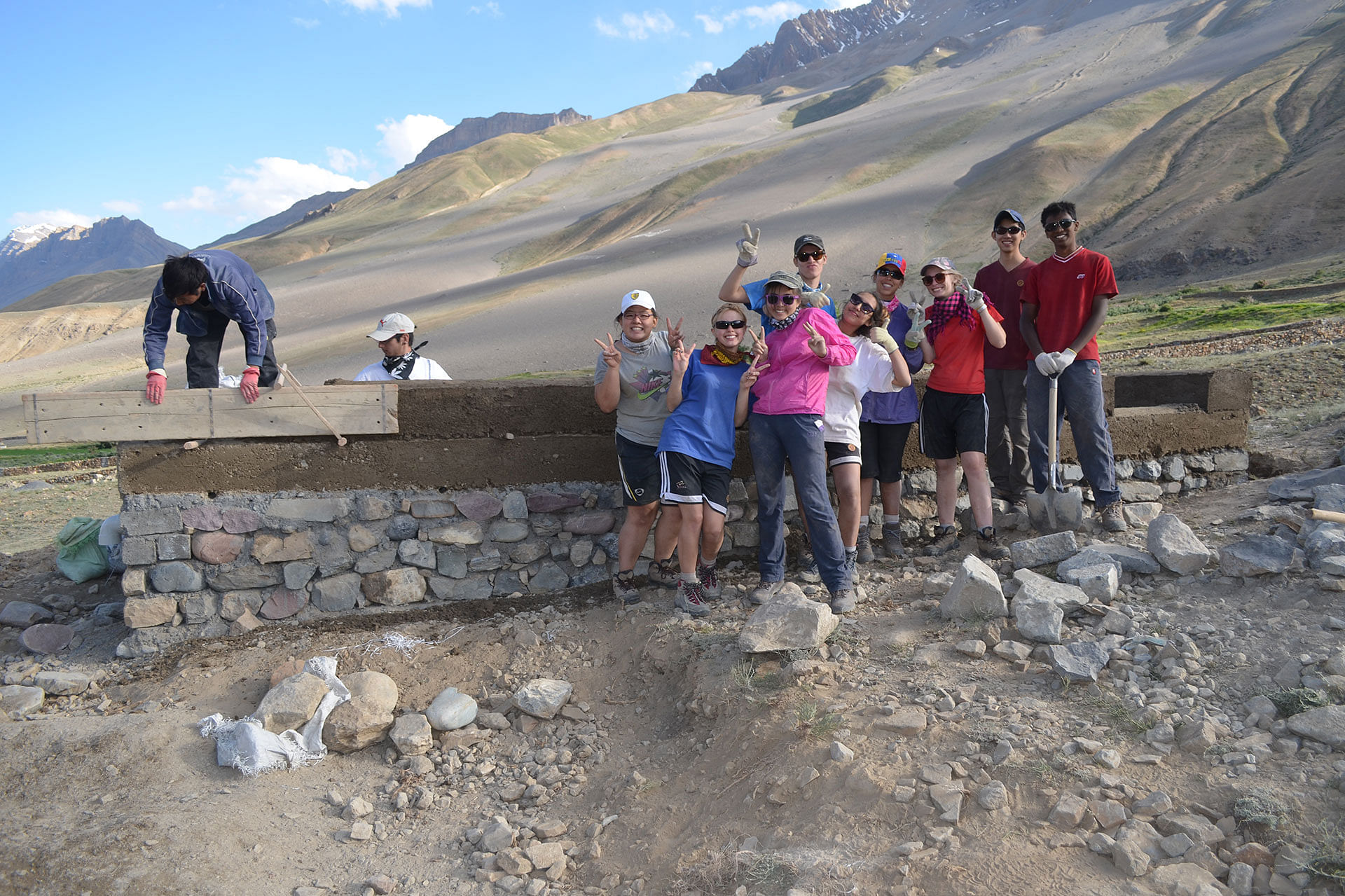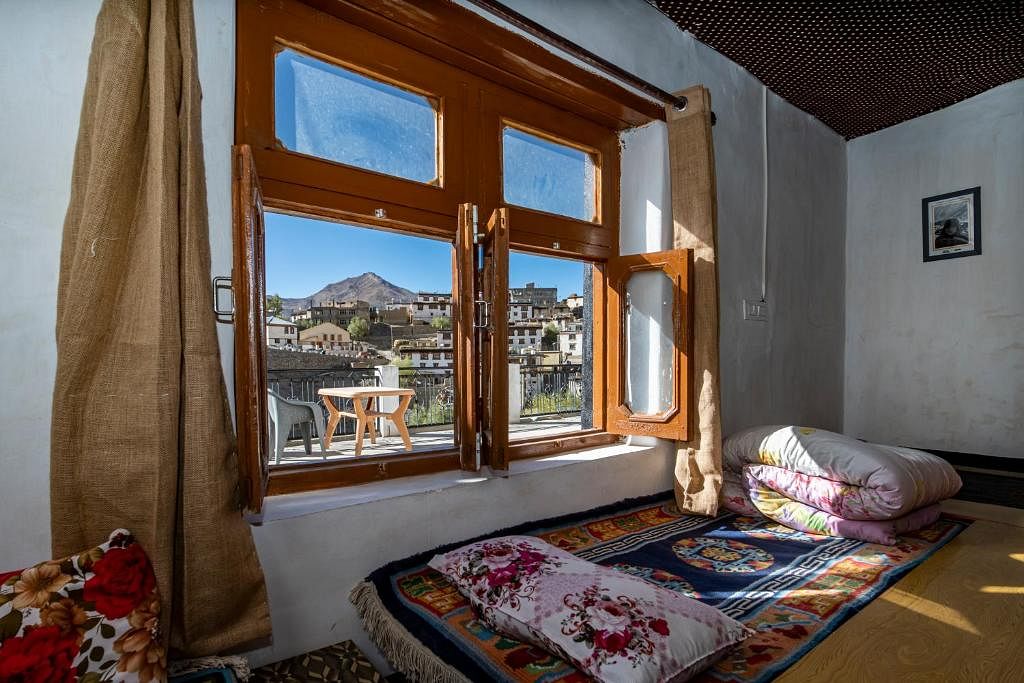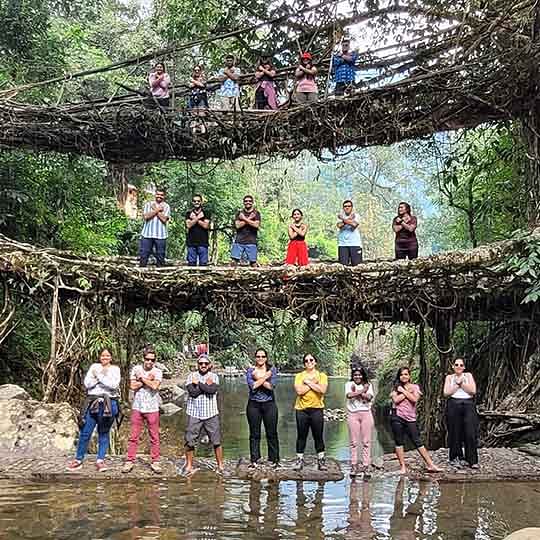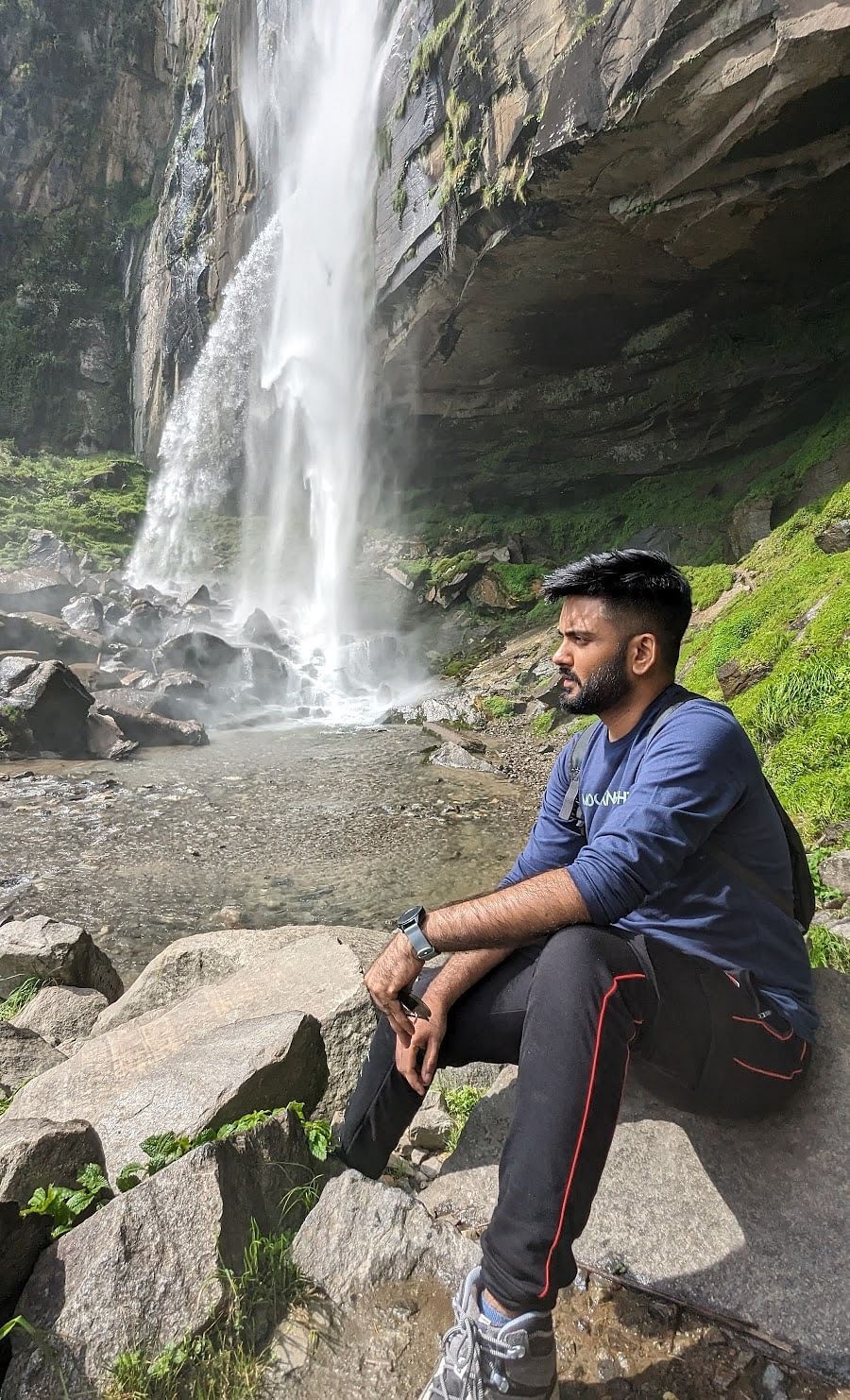Say Hello to Kibber - The Coolest wildlife spot in the mountains! Kibber Wildlife Sanctuary is located at a staggering 14,000 feet, making it the best hide-and-seek arena for snow leopards! It is India’s only freezing desert and is one of the most unique places to visit in Spiti Valley. This might sound crazy, but let us assure you, the chilling weather makes this location ideal. Spiti is full of natural beauty that cannot be standardized in mere words; however, watching ibex run across the land like they are planted pieces in a film set, enfolded with mountains and valleys, can be comprehended.
If ‘adventure-packed’ is what you seek, go for our Spiti Valley Tour that allows you to combine wildlife with stargazing and visit the monasteries. Spiti is home to untouched beauty, and it is a perfect fit for people who are looking for thrills.
History of Kibber Wildlife Sanctuary
The history of Kibber Wildlife Sanctuary Spiti is as intriguing as the sanctuary itself. It was established in 1992 to protect the fragile ecosystem of the high-altitude cold desert. Before its establishment, the area was under threat from human activities and overgrazing. Recognizing the need to conserve the region’s unique flora and fauna, the sanctuary was created to serve as a protected area for endangered species and to preserve the delicate balance of this ecosystem.
Over the years, Kibber Wildlife Sanctuary National Park has gained recognition as a vital conservation area. It has also become a center for research and education, attracting scientists, ecologists, and wildlife enthusiasts from across the globe. The involvement of local communities has played a significant role in its success. These communities not only contribute to the preservation efforts but also help visitors understand the importance of sustainable tourism in protecting such precious environments.
Suggested Read: Yak Safari in Spiti Valley
Flora of Kibber Wildlife Sanctuary National Park
The flora and fauna of Kibber Wildlife Sanctuary Spiti are truly unique, shaped by the harsh climate and rugged terrain of the Spiti Valley. Despite the cold desert conditions, the sanctuary supports a surprising variety of plants and animals.
The flora of Kibber Wildlife Sanctuary mainly consists of hardy alpine shrubs and herbs, such as juniper, artemisia, and caragana. These plants have adapted to the harsh weather and provide essential nourishment to the wildlife. The landscape, dotted with these resilient plants, looks stunning against the stark, snow-capped peaks in the background. Here are some of them which you can find in the Kibber Wildlife Sanctuary.
- Chara
- Agropyron
- Juniperus Macropoda
- Salix
- Betula
- Ephedra
- Rheum
- Rosularia
- Rhodiola
- Caragana
- Lindelofia
Fauna of Kibber Wildlife Sanctuary
The sanctuary is best known for its fauna, especially its elusive snow leopard. This magnificent creature, often called the “ghost of the mountains,” is the crown jewel of Kibber Wildlife Sanctuary National Park. Spotting a snow leopard is a rare and magical experience that draws wildlife enthusiasts and photographers to the area.
Other animals that call the sanctuary home include the Himalayan wolf, Tibetan gazelle, red fox, blue sheep (bharal), and ibex. These animals are well-adapted to the high-altitude environment and can often be spotted by keen observers. Bird watchers will also find Kibber a paradise, with species like the Himalayan snowcock, bearded vulture, and golden eagle soaring through its skies. Here are some of the rare species that you can find here.
- Yak
- Nayan
- Tibetan Woolly Hare
- Himalayan Marmot
- Mouse Hare
- Ibex
- Blue Sheep
- Pika
- Tibetan Wolf
- Snow Leopard
- Weasles
How to Reach Kibber Wildlife Sanctuary Spiti
If you’re planning to visit and want to explore Spiti Valley wildlife, understanding how to reach Kibber Wildlife Sanctuary National Park is essential. The sanctuary is located near Kibber village, around 20 kilometers from Kaza, the main town in Spiti Valley.
1. By Air: The nearest airport is Bhuntar, located near Kullu, which is about 250 kilometers away. After landing, you can hire a taxi or board a bus to Kaza, and from there, it’s a short journey to Kibber village.
2. By Train: The closest railway station is Shimla, well-connected to major cities in India. From Shimla, you can travel to Kaza by road, passing through stunning mountain vistas along the way.
3. By Road: Traveling by road is the most popular and adventurous way to reach the sanctuary. Regular buses and taxis operate from Manali and Shimla to Kaza. From Kaza, you can hire a local vehicle or even trek to Kibber village and the sanctuary.
The journey itself is an adventure, with winding mountain roads, deep gorges, and amazing views at every turn. Ensure your vehicle is in good condition, as the roads can be challenging, especially during the winter months.
Kaza to Kibber Distance: 18.9 Kilometers
Suggested Read: Spiti Valley Bike Trip
Best Time to Visit Kibber Wildlife Sanctuary in Spiti
The best time to visit Kibber Wildlife Sanctuary in Spiti is during the summer months, from May to September. During this period, the weather is pleasant, and the roads are accessible, making it easier to explore the sanctuary and its surroundings. Stay at some of the most Cozy Homestays in Kibber Village and know more about the Spiti Valley wildlife.
For those eager to spot the snow leopard, winter is the ideal time. Between November and February, these elusive creatures descend to lower altitudes in search of food, increasing the chances of a sighting. However, visiting during winter requires careful planning and preparation due to extreme cold and heavy snowfall.
Things to Enjoy Near Kibber Wildlife Sanctuary
Apart from exploring the Kibber Wildlife Sanctuary National Park, there are several things to enjoy near Kibber Wildlife Sanctuary that add to the charm of your visit:
1. Kibber Village: Known as one of the highest inhabited villages in the world, Kibber is a beautiful spot with traditional Spitian houses, warm hospitality, and stunning mountain views. The village also serves as a base for exploring the sanctuary and has some of the best places to visit in Kibber Village.
2. Key Monastery: A short drive from Kibber, Key Monastery is one of the oldest and most beautiful monasteries in the Spiti Valley. Its hilltop location offers beautiful views of the surrounding landscapes, and the monastery itself is a treasure trove of history and spirituality.
3. Chicham Bridge: Chicham Bridge is an engineering marvel, the highest bridge in Asia, and connects Kibber to Chicham village. Walking across the bridge offers thrilling views of the deep gorge below and the majestic mountains around.
4. Trekking and Hiking: The sanctuary and its surroundings are a trekker’s paradise. Popular routes include the trek to Parang La Pass and Kanamo West Peak Trail, which take you through some of the most untouched and awe-inspiring Himalayan landscapes.
5. Stargazing: Spiti Valley’s clear skies make it one of the best places in India for stargazing in Spiti. Spend a night under the stars and witness the Milky Way and constellations like never before.
Kibber Wildlife Sanctuary is more than just a tourist destination—it’s a vital conservation area. Various measures are in place to protect the sanctuary’s unique ecosystem and its wildlife. Local communities, government bodies, and NGOs collaborate to promote sustainable tourism, implement anti-poaching laws, and raise awareness about the importance of conservation.
Educational programs for visitors encourage responsible travel practices, such as minimizing waste and respecting the natural habitat. These efforts ensure that the sanctuary remains a safe haven for its wildlife while offering a rewarding experience for travelers.
Suggested Read: Camping in Spiti Valley
Stay Options at Kibber Wildlife Sanctuary
Although the difficult road conditions in Spiti Valley make it difficult for the travelers to find the right stay! And, especially when you come to Kibber - one of the highest villages you can only find beautiful and tranquil homestays for yourself rather than the luxury resorts.
However, you won’t find any luxury amenities and resorts in Spiti which makes these homestays more famous. Book these homestays with unmatched warmth in Spiti Valley. These are limited but comfortable with spacious rooms and sufficient supplies.
- Norling Homestay
- Deshek Homestay
- Zostel
Wake up to the beautiful vistas of these mountains and immerse yourself in its rich culture and biodiversity all around.
A visit to Kibber Wildlife Sanctuary is an unforgettable journey into the lap of nature. From its dramatic landscapes and rare wildlife to its rich cultural heritage and adventure opportunities, the sanctuary offers something for everyone. Whether you are a wildlife enthusiast hoping to spot a snow leopard, a trekker looking for thrilling trails, or a traveler seeking tranquility in the mountains, Kibber Wildlife Sanctuary won’t disappoint.
Take your time to explore the sanctuary and the treasures of Spiti Valley. Respect the local culture, follow sustainable practices, and leave the place as clean as you find it. A trip to Kibber Wildlife Sanctuary is more than just a getaway—it’s a chance to reconnect with nature and experience the magic of the Himalayas in its purest form.





